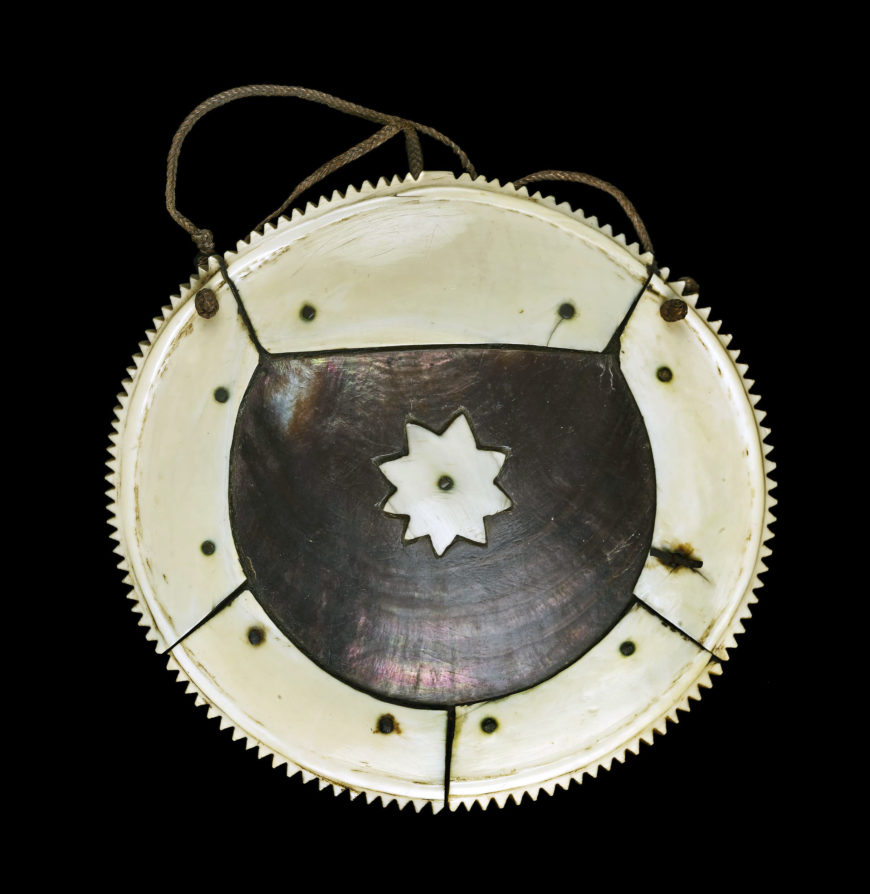
Tongan artist (?), breast-ornament (‘civavonovono’), before 1904, whale ivory (Physeter macrocephalus), pearlshell (Pinctada margaritifera), coir, metal, gum, Fiji, 19 x 20 cm (© Trustees of the British Museum)
A breastplate of this style, known in Fijian as civavonovono, was worn as an emblem of high status for ceremonies or during battles. Collectors and curators assumed for many years that they were made by Fijians, because they were worn and collected in the Fijian Islands. It is now recognized that they were in fact the work of Tongans or Samoans living in Fiji, who produced them for sale to chiefs. Tongans also made ivory breastplates as ornaments for themselves. Some of the earliest examples are large and would have had a protective rather than an ornamental function.
Sperm whale ivory became increasingly available in the nineteenth century due to American and British whale hunting and ivory trading. Polynesians did not hunt whales themselves, so prior to this activity only the teeth of stranded whales would have been used. The breastplate is made from sections of sperm whale tooth secured to a pearl-shell backing with metal rivets. The pearl-shell, typically, is of the black-lipped variety (Meleagrina margaritifera). It has a plaited coconut fibre cord. It is usual for the pearl-shell to be decorated with geometric shaped pieces of ivory as here. A breastplate in the Fiji Museum, Suva, is decorated with ivory human figures. The average width of a breastplate is around 20 centimeters. Many of the earliest examples are very skilled work, in which the pieces are sewn together with fibre cord through drilled holes, invisible from the front.
Whale ivory was also used for the manufacture of other personal ornaments. Necklaces of whale teeth were popular—either a row of complete teeth or split and polished ones were threaded together with coconut fibre. Fine specimens of whale teeth known as tabua were prized. They were exchanged during ceremonies and used as a symbol of prestige.

